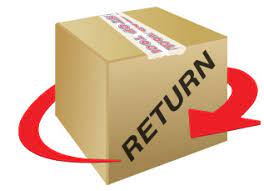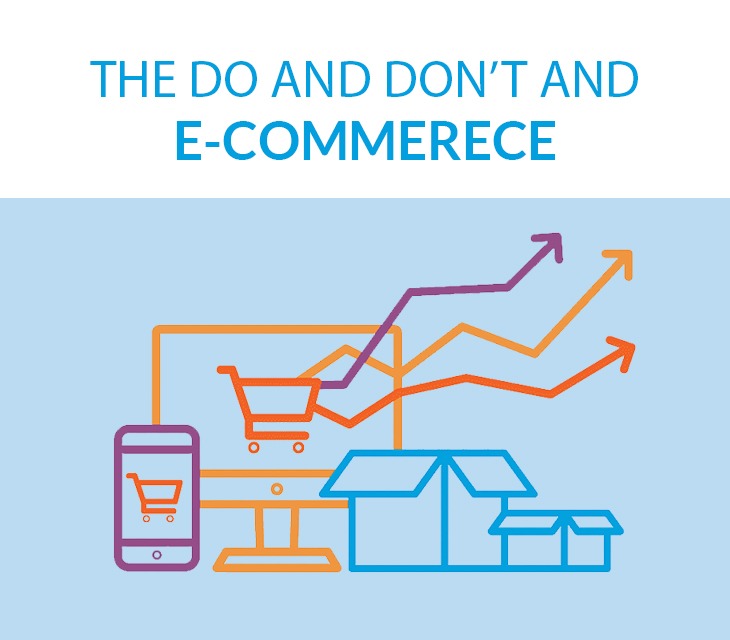
How to return the products
Jul 07 - 2021

The
Dos and Don’ts and Ecommerce in 2021
Ecommerce is the new strategy to
scaling your offline business, it appears classy and portrays you as one that
moves with the digital age, meanwhile starting an eCommerce is not as easy as
it seems, it only becomes easy if you know the dos and don’ts of the game. To overcome obstacles and run profitable
e-commerce, it takes time, persistence, and perseverance. If you've made the decision to take your business online, these ten simple do's and don'ts will
greatly assist you.
The Do’s
·
Make
solid plans, don’t just jump right into it
If you're just starting out with your
online shop, or preparing to launch a new marketing campaign, successful
execution necessitates the careful planning of multiple activities, so start
with a solid game plan. This strategy should include main goals and a timetable
for when you intend to hit those milestones, regardless of what you're trying
to accomplish. It should also provide key metrics that you can use to monitor
your progress and performance. Don't forget about financial planning to help
you get your company off the ground and save money for future investments.
·
Do
give time to make your site look good
Your website is your shop online.
Imagina having an ugly physical shop, nobody sure wants to patronize a shop
that projects you as an unserious person, it's like having rats run around your
shop while you wonder why people are not buying from you, or your shop is one
that people will have to wait about 30 minutes before you get the product, they
want to buy from them. So, if you are building your e-commerce site, you want to
make it look attractive.
The number of entrepreneurs taking
advantage of the internet for their businesses space keeps increasing every day,
and giving your company a professional appearance is essential if you want to
stand out from the thousands of other players. It is true that, in a perfect
world, the content will trump cover, but when the stakes are too high, it's the
little things that make the difference, and the site's design is one of them.
·
Set
targets for your marketing strategies
The popularity of eCommerce has set
developers and content creators to work, such that you have more resources to
work with. While you have access to (and probably are using) a plethora of
marketing resources to help you grow your online business, it's important to
concentrate on the most efficient and profitable campaigns that best target
your customer base. This means you can start focusing on SEO as soon as possible,
monitoring the traffic trends to see which triggers are pulling in your
direction. Try other marketing platforms, such as pay-per-click and email,
according to the limits of your budget. The idea is to try a little bit of many
tools and then check your performance metrics to see which of your marketing
efforts are most helpful to your business's success.
·
Manage
your email lists well
Growing your email list as soon as
you launch an eCommerce is a must if you have designed a fantastic site. Normally, your site should have the Mailchimp
plugin, the MailChimp plugin enables your customers to be automatically added
to your mailing list, where you can follow up with mails, to update them
about your goods and make them keep coming around. It's one of the most
effective ways to increase traffic in the future. When evaluating success,
include email lists as a primary performance measure. If you skip this section,
you might find yourself trapped, attempting to pay your way out through ads,
sponsored content, and other paid outlets.
·
Take
advantage of social media marketing
Social media is the new television
and radio in this digital age, chances are before anything gets to the physical
media outlets, the social media would have had their fill of the information.
Also, while it is good to have your website, you shouldn’t neglect to advertise on your social media handles, this already implies you should have a social
media handle for your businesses. There is a high probability that your social
media handles will have more traction than your websites, visiting your website
requires them to know the name of the website before deliberately visiting, but
on social media, it stares at them in their face and what they see can eventually
make them visit your website.
Don’ts
·
Don’t
ignore little details
Even the tiniest details can play
an important role in the progress of your online company, so resist the urge to
cut corners or overlook minor details, particularly when you're first getting
started. Even small details matter, so be meticulous in your attention to
detail.
Go through the site on a regular
basis to look for and fix any grammar or punctuation mistakes, for example. Pay
careful attention to even the tiniest changes in shipping or credit card
processing costs; although these seem insignificant at first, as your company
expands, these relatively trivial details can cost you a lot of money and lead
to lost customers.
·
Don’t
prioritize design over strategy
It's tempting to become distracted
by your efforts. It's great if you are getting positive feedback, but you
should still paint a bigger picture
There are still voids in the market
that need to be filled, as well as opportunities to innovate something new. If
a month has passed and you're still trying to improve minor design elements,
you've fallen into the trap of feature bias. Concentrate on the more critical
things, the ones that maximize productivity rather than just appeal.
·
Don’t
expect to succeed overnight
Ecommerce success does not happen
immediately, as it does for other things in life. Building your shop, creating
a trustworthy brand, and gaining confidence will take months, if not years, of
consistent marketing and excellent customer service. This means you shouldn't
be disappointed if orders don't start pouring in right away after your store
opens. Remember that standing out in the competitive online marketplace takes
time, and achieving sales success takes much longer.